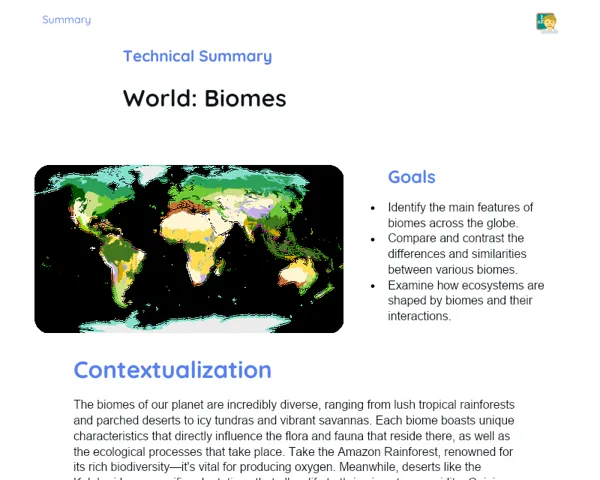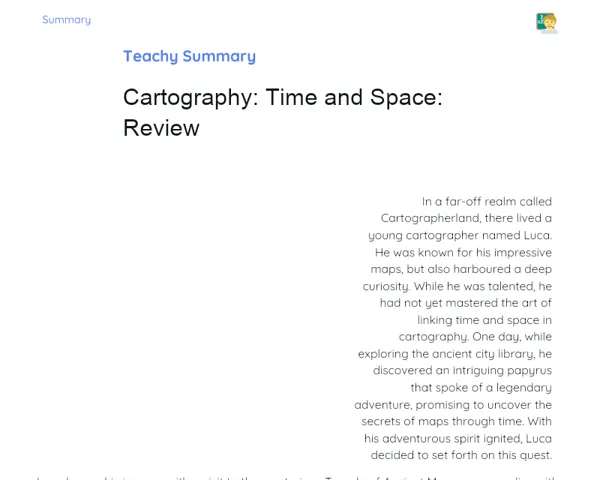Socioemotional Summary Conclusion
Goals
1. Examine and identify the changes and constants in pictures of the same place taken at different times.
2. Cultivate the ability to recognise emotions when observing changes and constants, connecting them to personal experiences.
Contextualization
Have you ever thought about what your school, neighbourhood, or city looked like a few years back? 🇿🇦🌳 Things evolve over time, but some aspects remain unchanged. This concept of 'Changes and Constants' not only shapes our surroundings but also has a significant impact on our emotions. Today, we will engage with Geography to dive into these transformations and explore what they mean for us!
Exercising Your Knowledge
Concept of Change and Constants
Change refers to the transformation or alteration that occurs over time, while constants are elements that stay the same, remaining unaffected by significant changes. In Geography, understanding these principles helps us evaluate how places grow or hold steady over time. These ideas reflect not just physical alterations but also emotional responses, as changes can stir feelings like surprise, nostalgia, or even anxiety.
-
Change: Refers to transformation or alteration. It can be physical (like a new building) or emotional (like feeling out of place in a changed environment).
-
Constants: Things that do not change over time, like a historical building that remains unchanged, or feelings of comfort associated with the familiar.
-
Emotional Importance: Changes can trigger various feelings; recognising these emotions promotes self-awareness and emotional regulation.
Importance of Changes and Constants in Geography
Geographers investigate changes and constants to grasp the development of landscapes, cities, and communities. Observing how a location has evolved or remained the same over time gives us insights into urban, social, and cultural progress. Furthermore, these observations help us comprehend our own history and identity, linking geographical elements to personal and community experiences.
-
Evolution of Landscapes: Changes in the landscape can indicate economic, social, and technological progress.
-
Historical Understanding: Studying constants aids in preserving the history and cultural identity of a place.
-
Connection with Emotions: Changes and constants can evoke feelings that connect us to our roots and identity.
Comparing Images
Comparing images of the same location taken at different times is a powerful method for identifying changes and constants. These comparisons help us clearly observe physical changes and grasp the essence of what remains unchanged. Beyond visual analysis, these comparisons can provoke emotional reflections on how we feel about these changes and their impact on our lives and community.
-
Visual Technique: By comparing old and new photos, we can identify changes such as new buildings or tear-downs.
-
Critical Analysis: Enables a deeper understanding of the development and transformation of a location.
-
Emotional Reflection: These comparisons can stir memories and feelings, helping us comprehend the emotional significance of changes and constants.
Key Terms
-
Change: Transformation or alteration that occurs over time.
-
Constants: Elements that remain unchanged over time.
-
Geographical Analysis: Study of changes and constants in a given area over time.
For Reflection
-
How do you feel about the changes that have taken place in your neighbourhood or city in recent years? Why do you think that is?
-
Think of something that has stayed the same in your life up to now. How does this influence your sense of safety and comfort?
-
In what ways could changes in the physical environment affect the emotions and behaviour of those living there?
Important Conclusions
-
Changes and constants help us understand the evolution of the places where we live and how these places influence our emotions.
-
By comparing images of the same location across different times, we can identify significant transformations and contemplate how these changes make us feel.
-
Recognising our emotions related to changes and constants is a crucial step towards developing our self-awareness and socio-emotional skills.
Impacts on Society
In today's world, our cities and communities are in a state of constant change. These transformations directly affect the lives of residents, whether through new developments, alterations in traffic, or the establishment of recreational spaces. Studying these shifts helps us to better plan for the future and adapt our routines to fully embrace improvements while mitigating negative impacts.
Emotionally, changes can be quite daunting. Witnessing a beloved spot being transformed can elicit feelings of loss or nostalgia. Nonetheless, it also affords us the chance to celebrate new opportunities and innovations. By understanding how these transformations impact us, we can learn to better manage our emotions and adapt positively to the shifts around us.
Dealing with Emotions
To assist you in processing your emotions while learning about changes and constants, I suggest the following exercise at home. Firstly, find a peaceful spot where you can focus. Think about a significant change you noticed in your neighbourhood or city lately and recognise how that change made you feel. Then, delve into the reasons behind that feeling by reflecting on what specifically changed and why it triggered that emotion in you. Accurately label the emotion; is it sadness, joy, anxiety, or something else? Next, express that emotion healthily, perhaps through journaling or confiding in a friend. Finally, regulate that emotion by seeking positive perspectives, such as considering the new opportunities that the change might bring.
Study Tips
-
Create a mural or album showcasing old and current images of your neighbourhood, making notes about the changes and constants you identify.
-
Engage with older family members and friends about how the neighbourhood or city was in the past. This can deepen your understanding and provide new emotional insights.
-
Utilize historical map apps to visually compare changes in various locations and observe how these transformations affect you emotionally.


